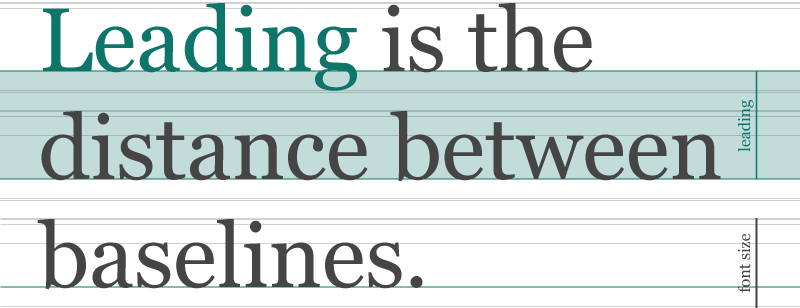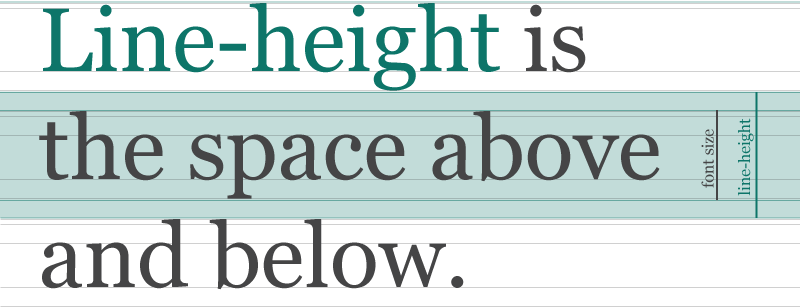Print: Leading

In print, line-spacing is called leading. The term leading dates back to the days of metal type; as opposed to being set solid, strips of lead of varying thickness were inserted between each line of type. Leading is the distance between two baselines measured in points — an absolute unit. The leading value includes the point size and the space between the lines.
-
In print you typically want to use a font with a medium x-height for body text. This provides a balance between the upper and lower case letters and brightens the page.
-
Avoid using heavy weight type in body text; ink can pool and distort text.
-
Body text is typically set between 10-12pts. Print has a fixed dimension and therefore limited space; additionally, proximity must be accounted for.
-
The rule-of-thumb in print is to set your leading at 120% of the font size. The common paragraph setting is 10-point type with 12-points of leading — written as 10/12 and spoken as “10 on 12.”
